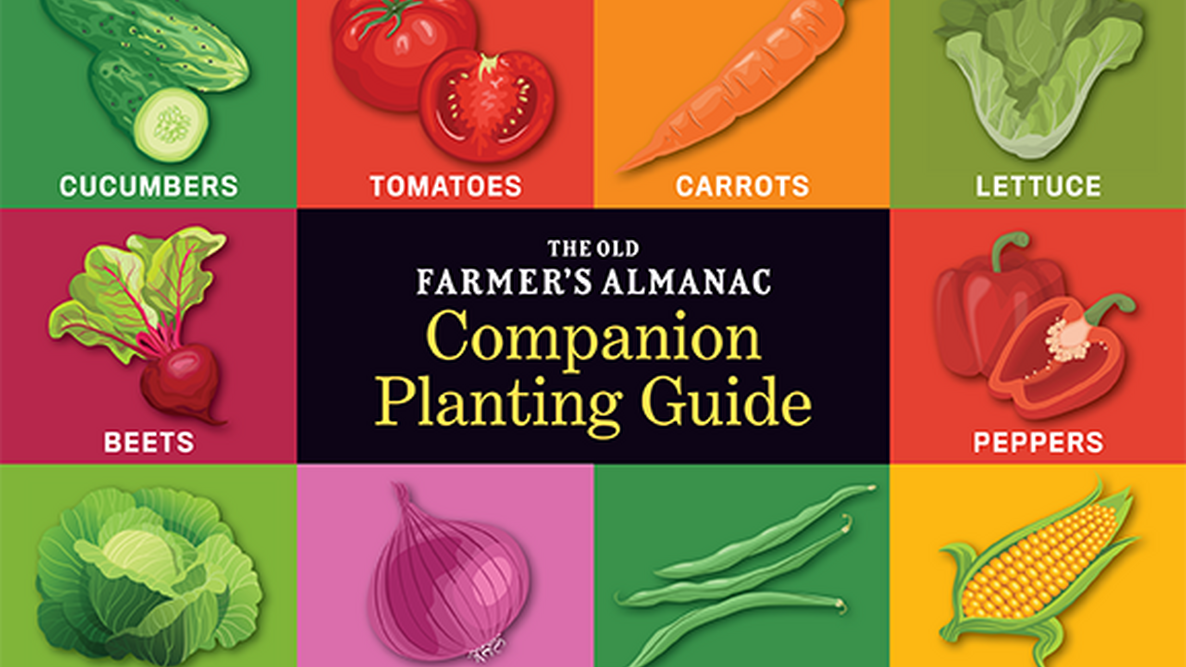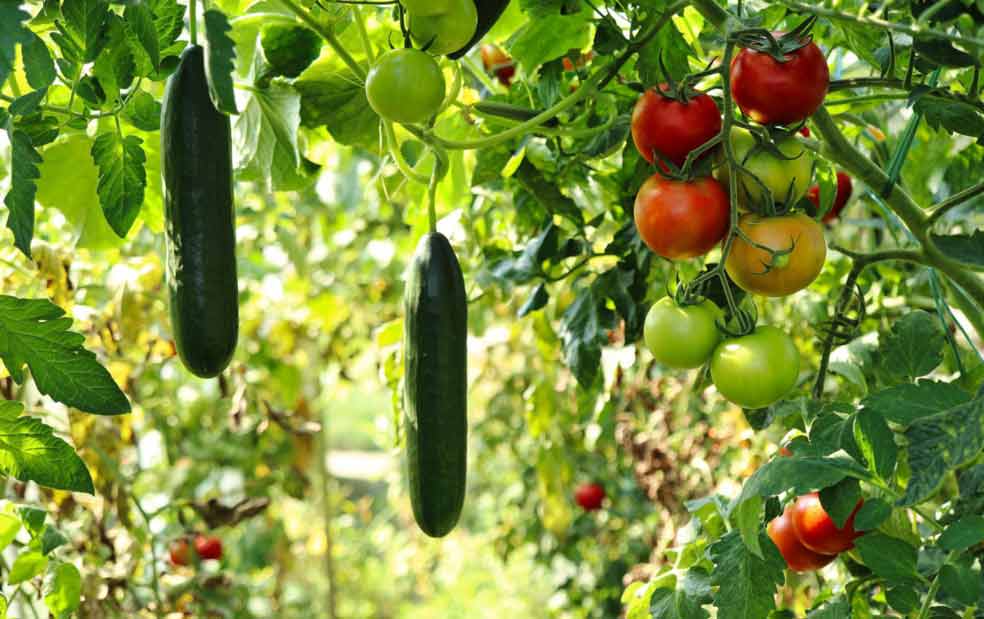Cross Planting Vegetables: The Ultimate Guide To Growing A Healthy And Productive Garden
Cross Planting Vegetables: The Ultimate Guide to Growing a Healthy and Productive Garden
Growing a vegetable garden can be a rewarding experience, but it can also be a lot of work. One way to make your gardening life a little easier is to practice companion planting, or cross planting vegetables.
Companion planting is the practice of planting certain types of vegetables together because they benefit each other in some way. For example, some plants attract beneficial insects that help to control pests, while others deter pests altogether. Some plants release chemicals that improve the flavor or yield of other plants, while others help to improve the soil quality.
There are many different benefits to companion planting, including:
- Increased yields: Companion planting can help to increase the yields of your vegetables by attracting beneficial insects, deterring pests, and improving the soil quality.
- Improved flavor: Some companion plants release chemicals that improve the flavor of other plants. For example, basil planted near tomatoes can help to enhance their flavor.
- Disease resistance: Companion planting can help to improve the disease resistance of your vegetables by attracting beneficial insects that prey on pests that carry diseases.
- Reduced pest problems: Companion planting can help to reduce pest problems by deterring pests or attracting their natural predators.
- Reduced need for pesticides: Companion planting can help to reduce the need for pesticides by attracting beneficial insects and deterring pests.
If you're new to companion planting, it can be helpful to start with a few simple combinations. Here are a few of the most popular companion planting combinations:
- Beans and corn: Beans fix nitrogen in the soil, which benefits the corn. Corn provides support for the beans to climb.
- Carrots and onions: The strong scent of onions deters pests that may attack carrots. Carrots help to improve the drainage of the soil for onions.
- Cucumbers and tomatoes: Cucumbers help to attract beneficial insects that prey on pests that attack tomatoes. Tomatoes provide support for cucumbers to climb.
- Lettuce and spinach: Lettuce shades the soil for spinach, which helps to prevent spinach from bolting. Spinach helps to suppress weeds that may compete with lettuce.
- Marigolds and tomatoes: Marigolds release chemicals that repel nematodes and other pests that attack tomatoes.
These are just a few of the many companion planting combinations that you can try. There are many resources available online and in libraries that can help you to find more companion planting combinations.
Once you've chosen a few companion planting combinations, you'll need to plan your garden accordingly. When planting your vegetables, be sure to space them properly so that they have enough room to grow. You may also need to provide some support for vining plants, such as cucumbers and beans.
With a little planning and effort, you can use companion planting to create a healthy and productive vegetable garden.
Cross planting vegetables is a gardening technique that involves planting different types of vegetables together in order to benefit each other. Some vegetables, for example, attract beneficial insects that help to control pests, while others release chemicals that deter harmful insects. Some vegetables also have different water and nutrient requirements, so planting them together can help to conserve resources.
If you're interested in learning more about cross planting vegetables, I recommend visiting Gardenia Inspiration. This website has a wealth of information on the topic, including a comprehensive list of compatible and incompatible vegetables, as well as tips on how to get started with cross planting.
FAQ of cross planting vegetables
- What is cross planting?
Cross planting is a gardening technique where you plant different types of vegetables together in the same bed. This can be done to improve the growth and health of your plants, as well as to deter pests and diseases.
- What are the benefits of cross planting?
There are many benefits to cross planting, including:
- Increased yields: Some plants benefit from cross pollination, which can lead to increased yields.
- Improved pest and disease control: Certain plants can help to repel pests and diseases, which can protect your other plants.
- Better soil health: Some plants can help to improve the nutrient content of the soil, which can benefit all of your plants.
- More attractive garden: Cross planting can create a more visually appealing garden, as different plants can complement each other's colors and shapes.
- What are some good combinations for cross planting?
Here are some good combinations for cross planting:
- Tomatoes and basil: Basil helps to repel tomato hornworms, a common pest of tomatoes.
- Carrots and onions: Carrots and onions benefit from each other's growth. Carrots help to break up the soil, which allows onions to grow more easily. Onions help to repel carrot flies, a common pest of carrots.
- Cucumbers and marigolds: Marigolds help to repel cucumber beetles, a common pest of cucumbers.
- Beans and peas: Beans and peas can help to fix nitrogen in the soil, which can benefit other plants in the garden.
- Squash and corn: Corn provides a trellis for vining squash plants to climb, and squash helps to suppress weeds.
- How do I know which vegetables to plant together?
There are many resources available to help you find good combinations for cross planting. You can find books, websites, and even apps that can help you plan your garden. You can also ask your local nursery or garden center for advice.
- What are some tips for cross planting?
Here are some tips for cross planting:
- Do your research: Before you start cross planting, it's important to do your research and find out which vegetables are compatible with each other.
- Plant the right plants in the right place: Make sure to plant your vegetables in the right location, taking into account their sunlight and water needs.
- Space your plants properly: Give your plants enough space to grow and thrive.
- Monitor your plants closely: Keep an eye on your plants for signs of pests or diseases, and take action as needed.
Image of cross planting vegetables
Here are 5 different images of cross planting vegetables from Pinterest:
- Carrots and radishes - Carrots and radishes are both root vegetables that grow well together. The radishes will mature quickly and be harvested before the carrots get too big, which will help to prevent the carrots from becoming "forked."

- Cucumbers and beans - Cucumbers and beans are both vining plants that can benefit from being planted together. The cucumbers will provide shade for the beans, which will help to keep the beans cool and prevent them from developing powdery mildew.

- Lettuce and spinach - Lettuce and spinach are both leafy greens that can be planted together. They have similar growing requirements and will not compete with each other for space.

- Peas and tomatoes - Peas and tomatoes are both nitrogen-fixing plants, which means they can help to enrich the soil for each other. The peas will mature quickly and be harvested before the tomatoes start to shade them out.

- Potatoes and pole beans - Potatoes and pole beans are both tall plants that can benefit from being planted together. The potatoes will provide support for the pole beans, and the beans will help to keep the soil around the potatoes cool and moist.
Post a Comment for "Cross Planting Vegetables: The Ultimate Guide To Growing A Healthy And Productive Garden"